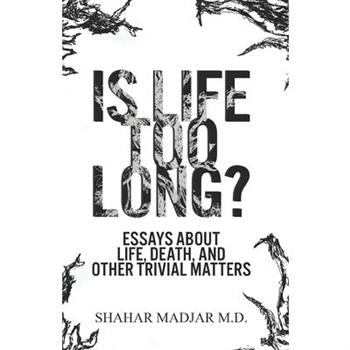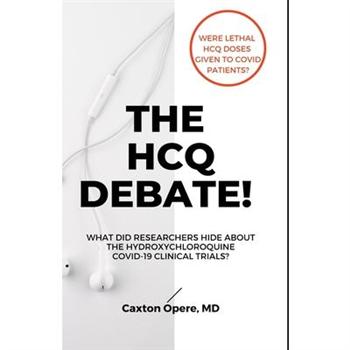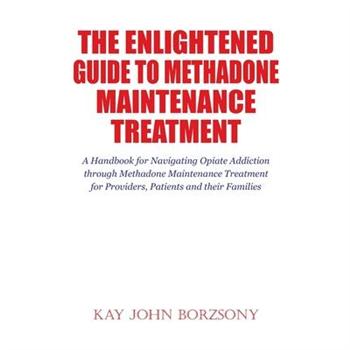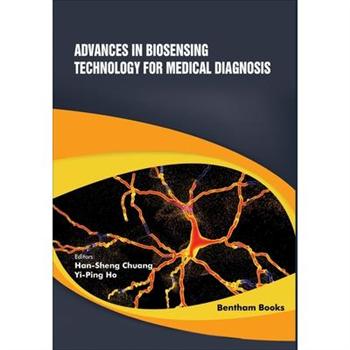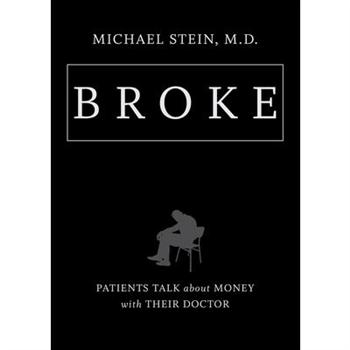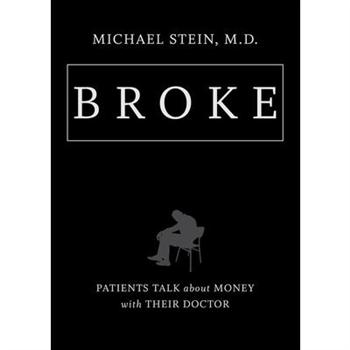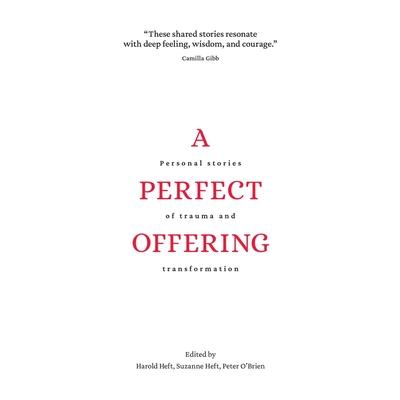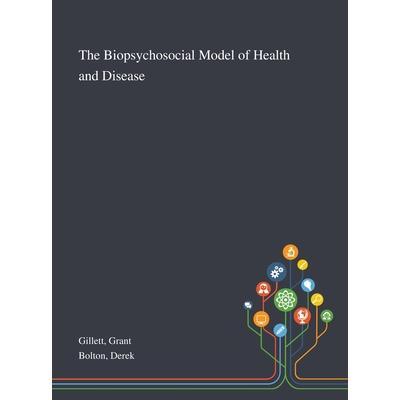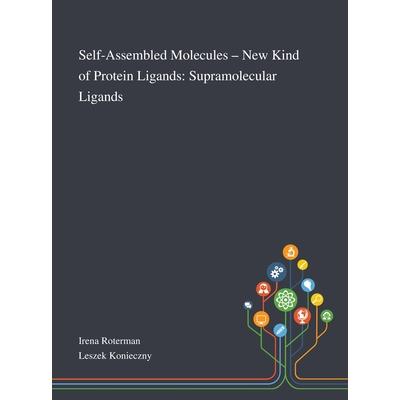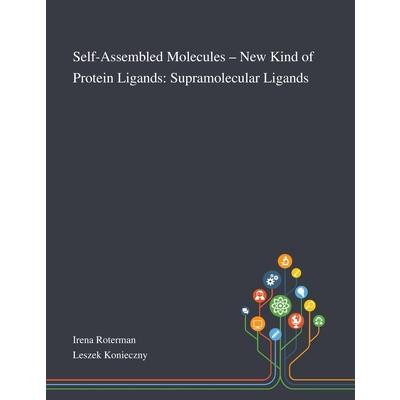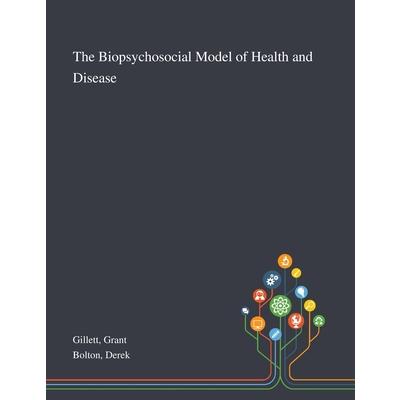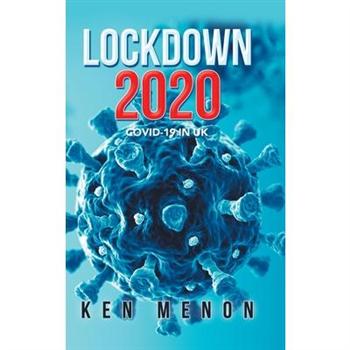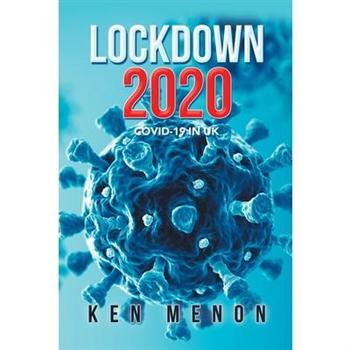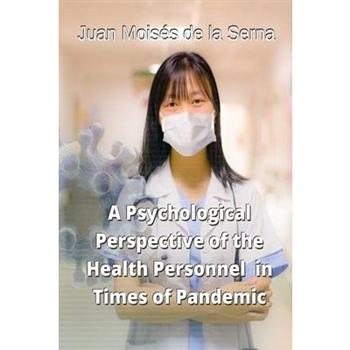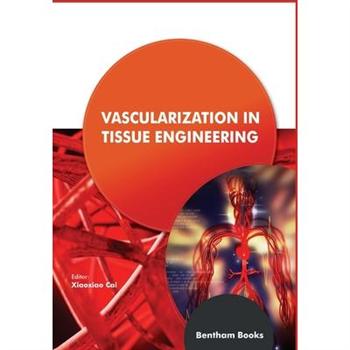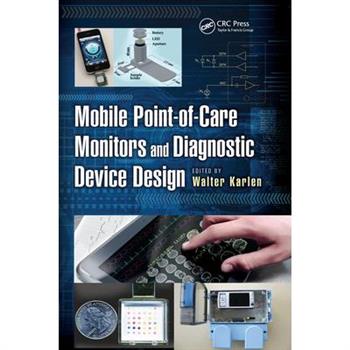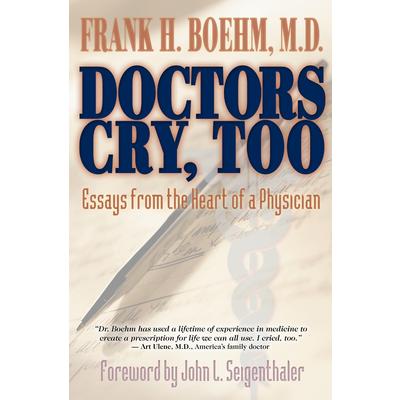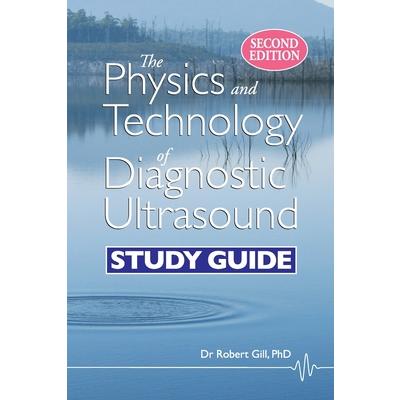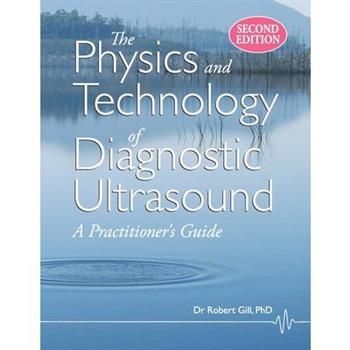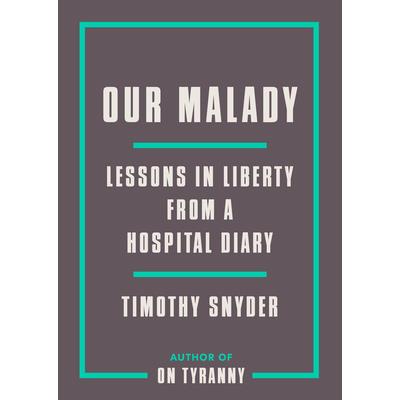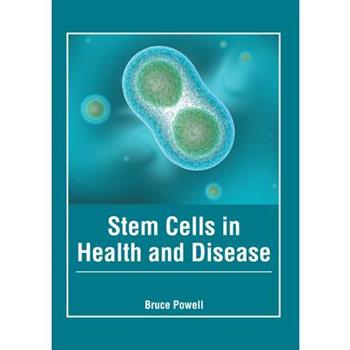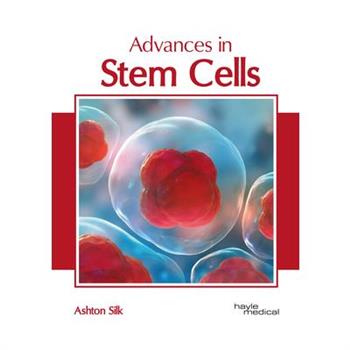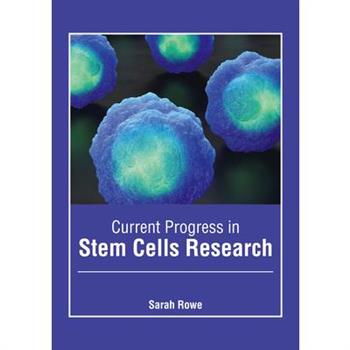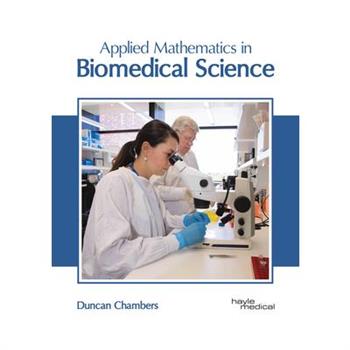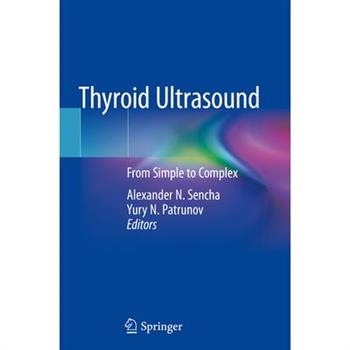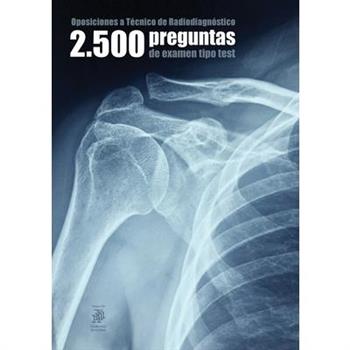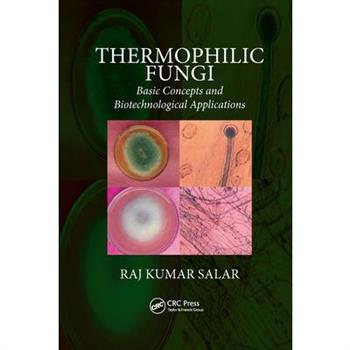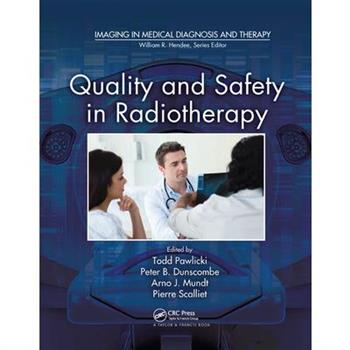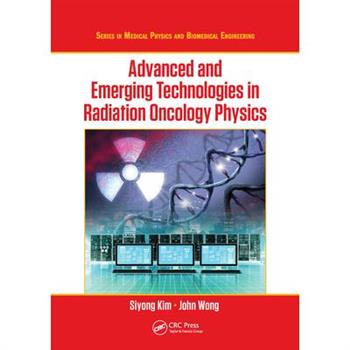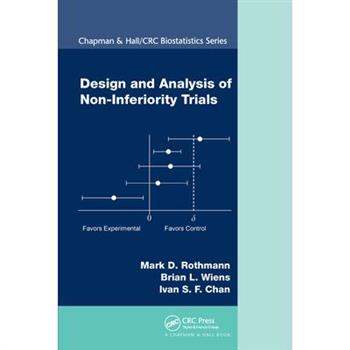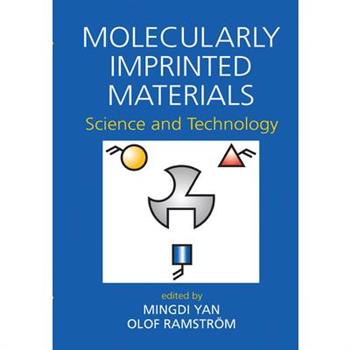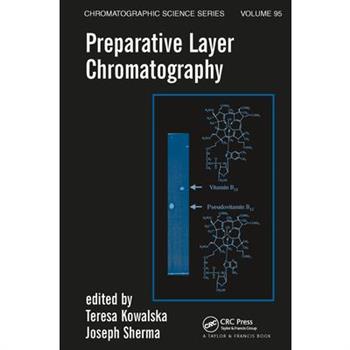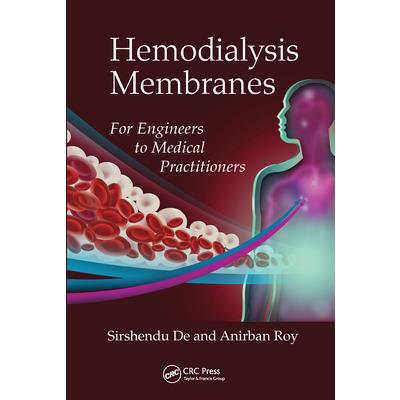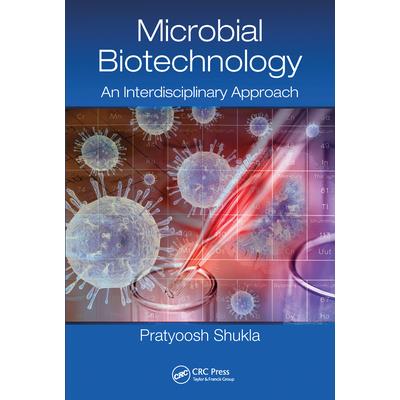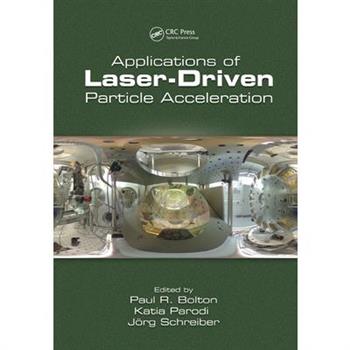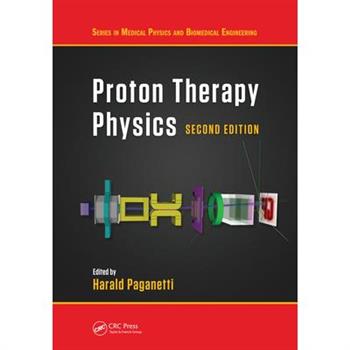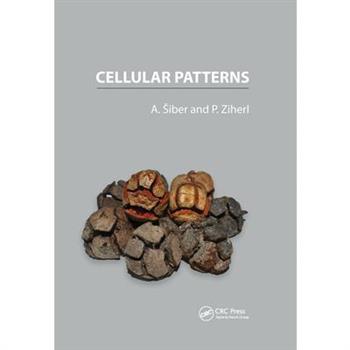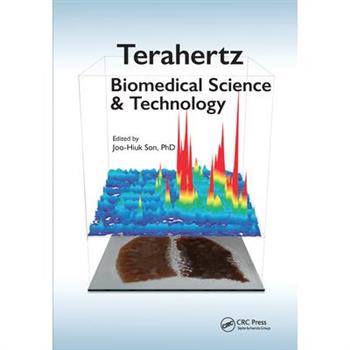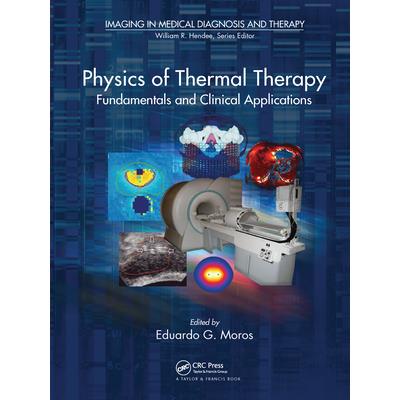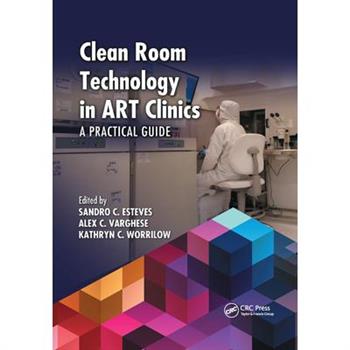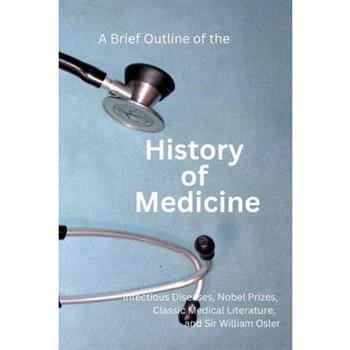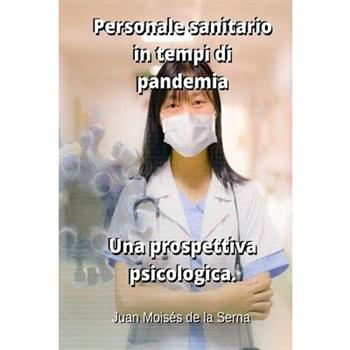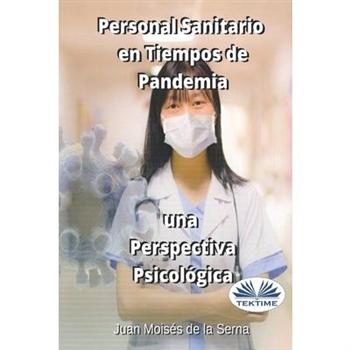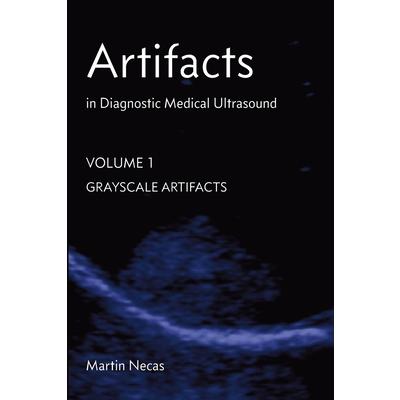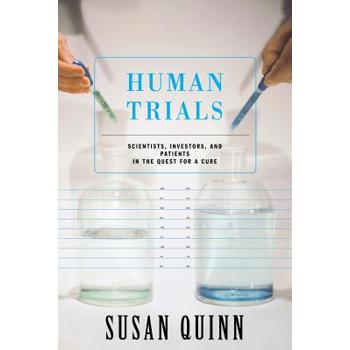Is Life Too Long?
Is Life Too Long? Essays about Life, Death, and other Trivial Matters is a collection of 18 selected essays and medical tales that were first published in The Mining Journal and in The Mining Gazette, the two leading newspapers of the Upper Peninsula of Michigan. Dr. Shahar Madjar tells the stories of doctors and their patients with empathy, philosophical flavor, and humor.Shahar Madjar, MD, MBA, is an Israeli-born urologist practicing in the remote, cold Upper Peninsula of Michigan (population 300,000). His medical training took him to different parts of the world: Tel Aviv, Israel; London, England; Miami, Florida; Cleveland, Ohio; Jackson, Mississippi; and Stony Brook, New York. Dr. Madjar is a former fellow at the University of Miami, Clinical Associate at the Cleveland Clinic, and Assistant Professor of Clinical Urology at the State University of New York, Stony Brook. He has published more than 50 articles in the medical literature and has presented his research internationally. For the past several years, Dr. Madjar has been writing a popular medical column for The Mining Journal, and for The Mining Gazette, the two leading daily newspaper of the Upper Peninsula of Michigan. He lives with his wife and three sons in Marquette, Michigan.
The Hcq Debate!
There is too much confusion about one pandemic drug, hydroxychloroquine. so much the US Government officials don't know what to tell you. Here are the facts with vivid descriptions of clinical trials and what researchers intentionally left out before speaking to the media. This is a review of over 25 important hydroxychloroquine clinical trials addressing the pandemic from around the world. Shocking truths that will get you thinking right again. What research was the EUA for hydroxychloroquine based on? What clinical trials were used by the NIH to formulate a non-treatment plan?
The Enlightened Guide To Methadone Maintenance Treatment
The dawn of a new era is upon us, and that is the era of medication assisted treatment (MAT) for opioid addiction as a first-line treatment. Ever since the first methadone clinics opened in the early 1970s in the U.S., nothing in medicine has been the subject of more stigma, controversy, misinformation, and downright mythology than methadone maintenance treatment (MMT.) The stigma against MMT is staggering and well-known, and it is the primary intent of this text to eliminate all of the false myths and fears surrounding MMT by providing accurate, if not always politically correct information in an easy to understand format.Do you, a loved one, friend, or family member suffer from severe opioid addiction? Tired of using the revolving door of abstinence-only-based treatment, only to constantly feel like a failure in spite of the fact that you want desperately to get better? Are you interested in the most researched, evidence-based, and most importantly, effective treatment modality for opioid addiction, one which has been considered the "Gold Standard" amongst addiction specialists for 50 years?If you are reading this, chances are that what you will discover between the covers of this book will astonish, shock, and possibly even anger you. Considering that abstinence-based treatment has been widely known to be ineffective for serious opioid addiction for at least a century, you may even have some questions of your own as to why such an effective treatment for opioid addiction has been hidden for so long from public-view, until now.This book has been designed to answer almost any serious question about Methadone Maintenance Treatment, and it does so in a manner which is groundbreaking: No more "conventional wisdom" or politically-correct B.S., this text cuts to the chase and, for the first time in publishing, tells the naked, unvarnished Truth about this vastly under-utilized, life-saving, indeed, life-changing treatment modality. Once you've read it, you'll never see methadone in the same tired and slanderous light ever again. Rigorously researched and cross-referenced over a period of five years, this book is the only serious text on the subject written for everyone from patients to treatment providers.
Advances in Biosensing Technology for Medical Diagnosis
Biosensing technology is rapidly flourishing in recent years due to the advancement of bio-MEMS/NEMS. However, the booming development of biosensors has not been very well addressed to the unmet clinical needs. Advances in Biosensing Technology for Medical Diagnosis initiates a headway into the realm of cutting-edge diagnostic tools which are expected to become routine clinical practice. This book aims to broaden the readers' horizon and guide them in tailoring different biosensing techniques for specific diagnostic procedures. Key Features: - 12 chapters cover several aspects of biosensing technologies including working principles and clinical validations - highlights the state-of-the-art biosensing technology developed in all fields - provides information about specific applications of novel biosensors used in clinical diagnosis, - provides step-by-step guidance of microfabrication for biosensors - focuses on bridging the gap between the scientific and the clinical communities - provides information about the diagnostic applications of biosensors for different diseases (including infectious diseases and neurodegenerative diseases). - covers Information about unconventional nano/microfluidic biosensor systems - features contributions from renowned experts in the field of biomedical engineering Advances in Biosensing Technology for Medical Diagnosis serves as a reference for healthcare providers and biomedical engineers who are interesting in biosensing techniques in medicine. The information provided in this reference will also benefit healthcare policymakers who are interested in new technologies that can impact the delivery of diagnostic services in healthcare systems.
Broke
In this age of shortened office visits, doctors take care of their patients' immediate needs and often elide their own personal histories. But as reflected in Broke, Michael Stein takes the time to listen to the experiences of his patients whose financial challenges complicate every decision in life they make. Stein asks his patients to tell him about their financial conditions not only to find out how to better treat them but also to bear witness to their very survival and the power of human resilience. Stein's intimate vignettes capture these encounters, allowing his patients to offer profound, moving, and unguarded reflections about their struggles, sometimes in a single sentence.Broke is a quietly passionate critique of a country that has grown callous to the plight of the poor, the tens of millions of people in the United States who live below the poverty line and who have no obvious path to security. Full of heartbreaking and surprising details and framed by a wry, knowing, and empathic humor, there is no other book that illuminates the experience of people facing economic hardship in this way.
Broke
In this age of shortened office visits, doctors take care of their patients' immediate needs and often elide their own personal histories. But as reflected in Broke, Michael Stein takes the time to listen to the experiences of his patients whose financial challenges complicate every decision in life they make. Stein asks his patients to tell him about their financial conditions not only to find out how to better treat them but also to bear witness to their very survival and the power of human resilience. Stein's intimate vignettes capture these encounters, allowing his patients to offer profound, moving, and unguarded reflections about their struggles, sometimes in a single sentence.Broke is a quietly passionate critique of a country that has grown callous to the plight of the poor, the tens of millions of people in the United States who live below the poverty line and who have no obvious path to security. Full of heartbreaking and surprising details and framed by a wry, knowing, and empathic humor, there is no other book that illuminates the experience of people facing economic hardship in this way.
A Perfect Offering
A Perfect Offering illuminates the dark recesses of trauma--the sudden loss of a child, surviving sexual assault, the legacy of residential schools, enduring war and imprisonment, living with chronic illness--and shines with the imperfect grace and resilience of the human heart. Some of the 31 stories will shock and disorient. Others will inspire and comfort. All are illustrative and compelling. The contributors include Jennifer Finney Boylan, trans activist and a regular contributor to The New York Times; Captain Trevor Greene, who was attacked by an axe-wielding teenager near Kandahar; author of Prisoner of Tehran, Marina Nemat; Jules Arita Koostachin, band member of Attawapiskat First Nation; and Paul Watson, awarded Pulitzer Prize for Spot News Photography. For others, this will be their first publication. "This emotionally honest book is simultaneously brutal, beautiful and deeply inspiring." --Jennifer Meeropol, granddaughter of Ethel and Julius Rosenberg "This book will break your heart right open." --Mike Downie, Co-Founder of The Gord Downie & Chanie Wenjack Fund "These shared stories resonate with deep feeling, wisdom and courage." --Award-wining novelist Camilla Gibb
The Biopsychosocial Model of Health and Disease
This open access book is a systematic update of the philosophical and scientific foundations of the biopsychosocial model of health, disease and healthcare. First proposed by George Engel 40 years ago, the Biopsychosocial Model is much cited in healthcare settings worldwide, but has been increasingly criticised for being vague, lacking in content, and in need of reworking in the light of recent developments. The book confronts the rapid changes to psychological science, neuroscience, healthcare, and philosophy that have occurred since the model was first proposed and addresses key issues such as the model's scientific basis, clinical utility, and philosophical coherence. The authors conceptualise biology and the psychosocial as in the same ontological space, interlinked by systems of communication-based regulatory control which constitute a new kind of causation. These are distinguished from physical and chemical laws, most clearly because they can break down, thus providing the basis for difference between health and disease. This work offers an urgent update to the model's scientific and philosophical foundations, providing a new and coherent account of causal interactions between the biological, the psychological and social. This work was published by Saint Philip Street Press pursuant to a Creative Commons license permitting commercial use. All rights not granted by the work's license are retained by the author or authors.
Self-Assembled Molecules - New Kind of Protein Ligands
The subject of this book relates to protein ligands with particular structural and complexation properties. They are composed of self-assembled molecules, capable of penetrating as a unit into proteins outside the binding site. The ribbon-like supramolecular system only permits the penetration of self-assembled molecules into the protein-body and formation of stable complexes. Supramolecular Congo red and similar compounds fit these requirements. Destabilized protein fragments enable the penetration of such ligands, with susceptibility to supramolecular ligand binding often associated with protein function. As a result, complexation modifies their functional effects. The activity of enzymes is inhibited by arresting them in the complexed state, but "naturally irreversible" complexation as in the case of immune complexation, is enhanced instead. This property offers many attractive possibilities of using supramolecular ligands as described in this book. This work was published by Saint Philip Street Press pursuant to a Creative Commons license permitting commercial use. All rights not granted by the work's license are retained by the author or authors.
Self-Assembled Molecules - New Kind of Protein Ligands
The subject of this book relates to protein ligands with particular structural and complexation properties. They are composed of self-assembled molecules, capable of penetrating as a unit into proteins outside the binding site. The ribbon-like supramolecular system only permits the penetration of self-assembled molecules into the protein-body and formation of stable complexes. Supramolecular Congo red and similar compounds fit these requirements. Destabilized protein fragments enable the penetration of such ligands, with susceptibility to supramolecular ligand binding often associated with protein function. As a result, complexation modifies their functional effects. The activity of enzymes is inhibited by arresting them in the complexed state, but "naturally irreversible" complexation as in the case of immune complexation, is enhanced instead. This property offers many attractive possibilities of using supramolecular ligands as described in this book. This work was published by Saint Philip Street Press pursuant to a Creative Commons license permitting commercial use. All rights not granted by the work's license are retained by the author or authors.
The Biopsychosocial Model of Health and Disease
This open access book is a systematic update of the philosophical and scientific foundations of the biopsychosocial model of health, disease and healthcare. First proposed by George Engel 40 years ago, the Biopsychosocial Model is much cited in healthcare settings worldwide, but has been increasingly criticised for being vague, lacking in content, and in need of reworking in the light of recent developments. The book confronts the rapid changes to psychological science, neuroscience, healthcare, and philosophy that have occurred since the model was first proposed and addresses key issues such as the model's scientific basis, clinical utility, and philosophical coherence. The authors conceptualise biology and the psychosocial as in the same ontological space, interlinked by systems of communication-based regulatory control which constitute a new kind of causation. These are distinguished from physical and chemical laws, most clearly because they can break down, thus providing the basis for difference between health and disease. This work offers an urgent update to the model's scientific and philosophical foundations, providing a new and coherent account of causal interactions between the biological, the psychological and social. This work was published by Saint Philip Street Press pursuant to a Creative Commons license permitting commercial use. All rights not granted by the work's license are retained by the author or authors.
Lockdown 2020
When Albert Camus wrote 'The Plague' in 1947, he could have been predicting Covid-19 in 2020. Some of his words would not be out of place today. The worry and fear that people live with every day is hardly diminishing. Unlike in 1947, the fear today is not only about health and life but also about the future, employment and quality of life in general. There is a fear of the present, concern for the future and a longing for the past. Breaches of lockdown are manifestations of that longing for the past - how it used to be. The 'new normal' is difficult to accept. How could one of the biggest economies in the world have fared so badly? How could the United Kingdom with a tradition of medical research and evidence in medicine have not foreseen events? Why did a country endowed with scientists and with plans for dealing with such an eventuality not act earlier than it did? We need to do better next time that a new virus appears, as surely it would. Covid-19 has shone a spotlight on society. We have seen ourselves as seldom before. We have seen 'the good, the bad and the ugly'.
Lockdown 2020
When Albert Camus wrote 'The Plague' in 1947, he could have been predicting Covid-19 in 2020. Some of his words would not be out of place today. The worry and fear that people live with every day is hardly diminishing. Unlike in 1947, the fear today is not only about health and life but also about the future, employment and quality of life in general. There is a fear of the present, concern for the future and a longing for the past. Breaches of lockdown are manifestations of that longing for the past - how it used to be. The 'new normal' is difficult to accept. How could one of the biggest economies in the world have fared so badly? How could the United Kingdom with a tradition of medical research and evidence in medicine have not foreseen events? Why did a country endowed with scientists and with plans for dealing with such an eventuality not act earlier than it did? We need to do better next time that a new virus appears, as surely it would. Covid-19 has shone a spotlight on society. We have seen ourselves as seldom before. We have seen 'the good, the bad and the ugly'.
A Psychological Perspective of the Health Personnel in Times of Pandemic
Afterward the successful on reception of the book "Psychological Aspects in Times of Pandemic" where a number of issues from the perspective of psychological science are addressed, related to the impact of the appearance COVID-19 on the lives of citizens, and afore readers insistent request for a text focused on healthcare personnel, from there came this book The purpose of it is to offer updated information on the psychological aspects of whom have been described as the battlefront against the advance of COVID-19 from a perspective of scientific psychology, for which reference will be made to the latest publications in this regard. A rigorous and up-to-date vision on the contributions of the science of psychology told in a way accessible to everyone, with the aim of helping to understand the emotional impact of this situation on health personnel, as well as the present and future consequences of the same.
Vascularization in Tissue Engineering
Vascularization in Tissue Engineering presents a comprehensive picture of blood vessel development and the recent developments on the understanding of the role of angiogenesis in regenerating biological tissues. The first-half of this book, consists of three chapters, emphasizing the fundamental knowledge about cell pathways, growth factors, co-culture strategies, cell interactions, and vascularization in pathological scenarios. The second half takes this knowledge a step further and explains the vascular microenvironment, scaffolds, and related applications in regenerative medicines. This section also provides information about biomaterial scaffolds and stem cell cultures for wound-healing and tissue regeneration. Readers will learn about cutting edge technologies in this field. This volume is a handy reference for students and researchers seeking information about the angiogenic processes and applied biotechnology in tissue engineering.
Mobile Point-Of-Care Monitors and Diagnostic Device Design
Efficient mobile systems that allow for vital sign monitoring and disease diagnosis at the point of care can help combat issues such as rising healthcare costs, treatment delays in remote and resource-poor areas, and the global shortage of skilled medical personnel.Covering everything from sensors, systems, and software to integration, usability, and regulatory challenges, Mobile Point-of-Care Monitors and Diagnostic Device Design offers valuable insight into state-of-the-art technologies, research, and methods for designing personal diagnostic and ambulatory healthcare devices. Presenting the combined expertise of contributors from various fields, this multidisciplinary text: Gives an overview of the latest mobile health and point-of-care technologies Discusses portable diagnostics devices and sensors, including mobile-phone-based health systems Explores lab-on-chip systems as well as energy-efficient solutions for mobile point-of-care monitors Addresses computer vision and signal processing for real-time diagnostics Considers interface design for lay healthcare providers and home users Mobile Point-of-Care Monitors and Diagnostic Device Design provides important background information about the design process of mobile health and point-of-care devices, using practical examples to illustrate key aspects related to instrumentation, information processing, and implementation.
Doctors Cry, Too
An inspiring view of the compassionate side of the medical community through one doctor's essays on courage, friendship, and hope. Doctors Cry, Too is a collection of essays from the heart of physician Frank H. Boehm, M.D. This moving and inspirational book deals with issues surrounding doctors, nurses, patients, their loved ones, and the perplexing issues that relate to these individuals. These essays portray a medical profession who is sensitive, emotional, spiritual, and compassionate. They include special moments in the life of Dr. Frank Boehm, such as a son and daughter going off to college, coping with the personal grief of losing loved ones, the birth of a granddaughter, and the healing that comes from joy. The essays also address his point of view on such subjects as strength and courage, faith, happiness, depression, forgiveness, death and dying, friendship, the heartbreak of infertility, parenting, and medical expectations. It is the author's hope that this book will help you understand that doctors are subject to the same stresses and pressures of life as everyone else, and that by gaining insight into the heart of one physician, you will gain insight into the heart of many.
The Physics and Technology of Diagnostic Ultrasound
This Study Guide is a companion to the popular ultrasound physics textbook "The Physics and Technology of Diagnostic Ultrasound: A Practitioner's Guide (Second Edition)". It contains 125 short questions keyed to the textbook chapters and model answers for each. It has been designed for both students and teachers. Students will find it valuable as a learning aid and a resource to test their knowledge and understanding. Teachers, supervisors and tutors will find it a useful teaching asset and an excellent starting point for writing quiz and exam questions.
The Physics and Technology of Diagnostic Ultrasound
An approachable textbook for medical practitioners and technologists studying to become ultrasound practitioners. Written by a leading ultrasound educator and designed to suit typical university, college or professional courses. Also appropriate for self-guided study.The first edition of this book sold over 5000 copies. This second edition brings the content up to date, while retaining the style and chapter structure of the first. Many sections have been rewritten, new material has been introduced and some outmoded material removed. As before, a Study Guide has been developed to complement the text.
Our Malady
NEW YORK TIMES BESTSELLER - From the author of the #1 New York Times bestseller On Tyranny comes an impassioned condemnation of America's pandemic response and an urgent call to rethink health and freedom. On December 29, 2019, historian Timothy Snyder fell gravely ill. Unable to stand, barely able to think, he waited for hours in an emergency room before being correctly diagnosed and rushed into surgery. Over the next few days, as he clung to life and the first light of a new year came through his window, he found himself reflecting on the fragility of health, not recognized in America as a human right but without which all rights and freedoms have no meaning. And that was before the pandemic. We have since watched American hospitals, long understaffed and undersupplied, buckling under waves of ill patients. The federal government made matters worse through willful ignorance, misinformation, and profiteering. Our system of commercial medicine failed the ultimate test, and thousands of Americans died. In this eye-opening cri de coeur, Snyder traces the societal forces that led us here and outlines the lessons we must learn to survive. In examining some of the darkest moments of recent history and of his own life, Snyder finds glimmers of hope and principles that could lead us out of our current malaise. Only by enshrining healthcare as a human right, elevating the authority of doctors and medical knowledge, and planning for our children's future can we create an America where everyone is truly free.
Stem Cells in Health and Disease
Stem cells are cells with the ability to differentiate into specific cell types. They also self-renew perpetually. Stem cells are of two kinds- embryonic stem cells and adult stem cells. Embryonic stem cells are pluripotent cells that can become any cell in the adult body, while adult stem cells give rise to similar cell types only. Stem cells have immense potential in tissue repair and regeneration. Stem cell therapy, which is also called regenerative medicine, promotes the repair response of dysfunctional, diseased or injured tissues. This is done using stem cells or their derivatives. Stem cells that are manipulated to specialize into specific cell types, like blood cells, nerve cells, heart muscle cells, etc. are then implanted into a person. Stem cell transplants may also be performed to replace cells damaged due to disease or chemotherapy. It can also be done as a strategy to enable the donor's immune system to fight cancers and other blood-related disorders, such as lymphoma, leukemia, neuroblastoma and multiple myeloma. This book covers in detail some existing theories and innovative concepts revolving around stem cell therapy. Some of the diverse topics covered herein address the role of stem cells in health and disease. As this field is emerging at a fast pace, this book will help the readers to better understand the advanced concepts of this field.
Advances in Stem Cells
Stem cells are the cells that differentiate into other cells and divide upon self-renewal to produce more stem cells. There are two types of stem cells, embryonic stem cells and adult stem cells. Progenitor cells and stem cells serve as a repair system by replenishing adult tissues. In the developing embryo, stem cells differentiate into specialized cells- endoderm, ectoderm and mesoderm, and also maintain the normal turnover of regenerative organs like skin, blood and intestinal tissues. Embryonic stem cells are a theoretically potential source for the development of regenerative medicine and tissue replacement. Adult stem cells can be acquired from adipose tissue, blood and bone marrow, as well as from the blood of the umbilical cord after birth. They are used in medical therapies such as in bone marrow transplantation. They can also be artificially grown and differentiated into specialized cells. Stem cell therapy helps to treat and prevent diseases or conditions. Some of the diseases where stem cell treatment holds potential include Parkinson's disease, diabetes, osteoarthritis, spinal cord injury repair, rheumatoid arthritis, cancer, amyotrophic lateral sclerosis, etc. This book is a valuable compilation of topics, ranging from the basic to the most complex advances in stem cells. It explores all the important aspects of stem cell therapy in the present day scenario. Scientists and students actively engaged in this field will find this book full of crucial and unexplored concepts.
Current Progress in Stem Cells Research
Stem cells are the cells with the unique ability to differentiate into specialized cell types. The bone marrow, blood and adipose tissue are the three known accessible sources of adult stem cells in humans. Such adult stem cells are of use in various medical therapies for the treatment and prevention of diseases or conditions. Bone marrow transplant is the most common stem-cell therapy. Research is being done to apply stem-cell treatments for the management of neurodegenerative diseases, heart disease, diabetes, etc. Alternative sources of stem cells and innovative techniques for generating organoids using stem cells are being explored. These will enable the understanding of organogenesis, human development and modeling of human diseases. This book aims to shed light on some of the unexplored aspects of stem cells and the recent researches in this field. The various advancements in stem cell therapy are glanced at and their applications as well as ramifications are looked at in detail. Coherent flow of topics, student-friendly language and extensive use of examples make this book an invaluable source of knowledge.
Applied Mathematics in Biomedical Science
Biomedical science is the set of applied sciences that has applications in developing technology that can be of use in public health or healthcare. These applied sciences include clinical virology, medical microbiology, clinical epidemiology, biomedical engineering and genetic epidemiology, among others. An important branch of biomedical science is biomedical engineering, in which the concepts of engineering design and engineering principles are used to advance healthcare diagnosis, monitoring and therapy. Mathematical and theoretical biology applies mathematical models, theoretical analysis and abstractions to develop an insight into the structure, behavior and development of living systems. Mathematics is increasingly being applied to develop solutions to biomedical problems, particularly in toxicology, neurobiology and infectious diseases. The ever growing need of advanced technology is the reason that has fueled the research in the field of biomedical science in recent times. This book attempts to understand the use of mathematics in biomedical science and how such an integration has advanced the frontiers of medical science. It is a collective contribution of a renowned group of international experts.
Oposiciones a T矇cnico de Radiodiagn籀stico2.500 preguntas de examen tipo test
Material de autoevaluaci籀n para la preparaci籀n de las pruebas de acceso a la categor穩a de T矇cnico/a Especialista en Radiodiagn籀stico / Diagn籀stico por la imagen. Son 2.500 preguntas de tipo test de ex獺menes reales de los diferentes sistemas de salud.El ejemplar lleva adem獺s asociada una suscripci籀n a la plataforma virtual www.cacahuetest.com, para poder repasarlas tambi矇n desde el m籀vil, as穩 como un anexo de otras 1.400 preguntas sobre Seguridad Radiol籀gica.
Thermophilic Fungi
This book aims to fill the gap by documenting thermophilic fungi discovered. It covers basic aspects, taxonomy, classification, molecular phyologeny and biotechnological applications.
Confidence Intervals for Proportions and Related Measures of Effect Size
Confidence Intervals for Proportions and Related Measures of Effect Size illustrates the use of effect size measures and corresponding confidence intervals as more informative alternatives to the most basic and widely used significance tests. The book provides you with a deep understanding of what happens when these statistical methods are applied in situations far removed from the familiar Gaussian case.Drawing on his extensive work as a statistician and professor at Cardiff University School of Medicine, the author brings together methods for calculating confidence intervals for proportions and several other important measures, including differences, ratios, and nonparametric effect size measures generalizing Mann-Whitney and Wilcoxon tests. He also explains three important approaches to obtaining intervals for related measures. Many examples illustrate the application of the methods in the health and social sciences. Requiring little computational skills, the book offers user-friendly Excel spreadsheets for download at www.crcpress.com, enabling you to easily apply the methods to your own empirical data.
Quality and Safety in Radiotherapy
The first text to focus solely on quality and safety in radiotherapy, this work encompasses not only traditional, more technically oriented, quality assurance activities, but also general approaches of quality and safety. It includes contributions from experts both inside and outside the field to present a global view. The task of assuring quality is no longer viewed solely as a technical, equipment-dependent endeavor. Instead, it is now recognized as depending on both the processes and the people delivering the service. Divided into seven broad categories, the text covers: Quality Management and Improvement includes discussions about lean thinking, process control, and access to services.Patient Safety and Managing Error looks at reactive and prospective error management techniques.Methods to Assure and Improve Quality deals broadly with techniques to monitor, assure, and improve quality. People and Quality focuses on human factors, changing roles, staffing, and training. Quality Assurance in Radiotherapy addresses the general issues of quality assurance with descriptions of the key systems used to plan and treat patients and includes specific recommendations on the types and frequencies of certain tests. Quality Control: Equipment and Quality Control: Patient-Specific provides explicit details of quality control relating to equipment and patient-specific issues.Recently, a transformation of quality and safety in radiotherapy has begun to take place. Among the key drivers of this transformation have been new industrial and systems engineering approaches that have come to the forefront in recent years following revelations of system failures. This book provides an approach to quality that is long needed, one that deals with both human and technical aspects that must be the part of any overall quality improvement program.
Cross-Over Experiments
Developing a model-based approach that enables any cross-over trial, of any degree of imbalance, to be analyzed both for direct effects and for residual effects, using consistent procedures that employ commercially available statistical software, this text offers a guide to the analysis of cross-over designs.;Illustrating practical applications throughout with examples, this book: emphasizes the importance of choosing highly efficient designs that separate treatment and carryover effects; demonstrates the exact methodology needed to handle the analysis of data; presents a new methodology for the analysis of binary and categorical data; and considers the effects of blocking. The appendices facilitate the choosing of an appropriate design for every experimental need.
Advanced and Emerging Technologies in Radiation Oncology Physics
This new book educates readers about new technologies before they appear in hospitals, enabling medical physicists and clinicians to prepare for new technologies thoroughly and proactively, and provide better patient care once new equipment becomes available. Emerging technologies in imaging, treatment planning, treatment delivery, dosimetry and informatics are all discussed. The book is divided into three parts: recently developed technologies available for practice; technologies under development nearing completion; and technologies in an early stage of development that could have potential radiotherapy applications.Features: Introduces emerging technologies in imaging, treatment planning, treatment delivery, dosimetry and informatics The advantages and limitations of each technology in clinical settings are discussed, and recommendations on how to adopt the technologies are provided Critiques and improvement points are provided for researchers, in addition to suggestions on how to prepare quality assurance are provided as needed
Design and Analysis of Non-Inferiority Trials
The increased use of non-inferiority analysis has been accompanied by a proliferation of research on the design and analysis of non-inferiority studies. Using examples from real clinical trials, Design and Analysis of Non-Inferiority Trials brings together this body of research and confronts the issues involved in the design of a non-inferiority trial. Each chapter begins with a non-technical introduction, making the text easily understood by those without prior knowledge of this type of trial. Topics covered include: A variety of issues of non-inferiority trials, including multiple comparisons, missing data, analysis population, the use of safety margins, the internal consistency of non-inferiority inference, the use of surrogate endpoints, trial monitoring, and equivalence trials Specific issues and analysis methods when the data are binary, continuous, and time-to-event The history of non-inferiority trials and the design and conduct considerations for a non-inferiority trial The strength of evidence of an efficacy finding and how to evaluate the effect size of an active control therapy A comprehensive discussion on the purpose and issues involved with non-inferiority trials, Design and Analysis of Non-inferiority Trials will assist current and future scientists and statisticians on the optimal design of non-inferiority trials and in assessing the quality of non-inferiority comparisons done in practice.
Molecularly Imprinted Materials
Providing an up-to-date overview of the field, this reference presents extensive discussions on a wide range of approaches for molecular imprinting written by pioneering experts on the subject. Molecularly Imprinted Materials: Science and Technology offers experimental protocols that exemplify specific techniques, as well as detailed surveys on molecular imprinting research and applications. Provides a comprehensive tutorial for those who wish to learn basic techniques and make new contributions to the field, as well as in-depth discussions, guidelines, and experimental protocols to help beginners gain a jump-start in the field of molecular imprinting The book examines the recent evolution of the technology, offering step-by-step instruction on methods to design and optimize molecularly imprinted polymers and suggestions, recommendations, and troubleshooting strategies for alternative approaches and improvements discussed in the text. about the editors... MINGDI YAN is Associate Professor, Department of Chemistry, Portland State University, Oregon. After serving as a senior research scientist at Ikonos Corporation, Portland, Oregon, she joined the Portland State University faculty and now leads a research group in organic and polymeric materials science. She received the B.S. degree in polymer physics from the University of Science and Technology, China, and the Ph.D. degree in organic chemistry from the University of Oregon. OLOF RAMSTR?M is Associate Professor, Royal Institute of Technology, Stockholm, Sweden. After serving with Professor Jean-Marie Lehn at Universit矇 Louis Pasteur, Strasbourg, France, he joined the Royal Institute of Technology and is now leading a group specializing in supramolecular chemistry and molecular recognition. He received the M.Sc. degree in chemical engineering and the Ph.D. degree in bioorganic chemistry/applied biochemistry from Lund Institute of Technology/Lund University, Sweden.
Preparative Layer Chromatography
Preparative Layer Chromatography explains how this method is used for separating large quantities of mixtures containing a wide variety of important compounds. It offers a broad review of preparative layer chromatography (PLC) applications and adaptable working procedures for microseparations involving organic, inorganic, and organometallic compounds. The book contains theoretical background, chemical principles, and relevance of preparative layer chromatography (PLC) to a wide range of applications, particularly in the study of pharmaceuticals and biochemistry. Written by many of the best known and most knowledgeable specialists in the field, the chapters describe all the necessary techniques, current procedures, and superior strategies for selecting the most suitable eluents and designing application-specific PLC systems based on the data being sought. They provide comprehensive instructions, surrounding issues, and suggestions for optimizing optional working techniques within the framework of PLC. The book also provides a complete coverage of bulk sorbents and precoated chromatographic plates available on the international market. A comprehensive, yet accessible source of information, Preparative Layer Chromatography is a relevant and practical text for experienced as well as novice researchers and practitioners involved in analytical, environmental, geochemical, biological, medicinal, and pharmaceutical analysis.
Hemodialysis Membranes
Book initiates with introductory material to hemodialysis technology and its historical evolution and later on divulging into the field of biomaterials. With this background, the book discusses selection criteria of a suitable biomaterial for synthesis of haemodialysis membranes along with illustration of a complete indigenous, low cost technology for spinning of haemodialysis fibres. Well illustrated description of instruments used for membrane characterization and biomedical engineering is also provided at suitable junctures to effectively present the concept including worked out examples. Present title can be a good textbook as well as a research material for membrane as well as biomedical engineering curricula and provides coverage for appropriate undergraduate and graduate students interested in hemodialysis membranes.
Microbial Biotechnology
Microbial Biotechnology: An Interdisciplinary Approach covers all aspects of microbial biotechnology, whilst bringing the field of functional foods and microbial bioremediation to the fore. Recounting the interdisciplinary scope of biotechnology and its discoveries, this text presents innovative ideas in the field of emerging biotechnology providing the scientific community with a much needed new resource.Acting as an important means of information for researchers working in interdisciplinary areas of research, this text: Envisages the recent ideas of novel findings in microbiology Provides insight into the various interdisciplinary research avenues Uniquely covers a diverse range of topics Presents groundbreaking new findings in key areas of modern biotechnology Enhanced and straight forward descriptions cater to the needs of researchers working in areas of bacterial exopolysaccharides, microalgal proteomics, applications of Microbial L-asparaginases, novel aspects of bioremediation, Probiotics and their impact on society, and microbial community analysis in waste water treatment techniques. It will also prove crucial reading for senior undergraduate and graduate students and professionals working in areas of modern biotechnology.
Applications of Laser-Driven Particle Acceleration
The first book of its kind to highlight the unique capabilities of laser-driven acceleration and its diverse potential, Applications of Laser-Driven Particle Acceleration presents the basic understanding of acceleration concepts and envisioned prospects for selected applications. As the main focus, this new book explores exciting and diverse application possibilities, with emphasis on those uniquely enabled by the laser driver that can also be meaningful and realistic for potential users. It also emphasises distinction, in the accelerator context, between laser-driven accelerated particle sources and the integrated laser-driven particle accelerator system (all-optical and hybrid versions).A key aim of the book is to inform multiple, interdisciplinary research communities of the new possibilities available and to inspire them to engage with laser-driven acceleration, further motivating and advancing this developing field. Material is presented in a thorough yet accessible manner, making it a valuable reference text for general scientific and engineering researchers who are not necessarily subject matter experts. Applications of Laser-Driven Particle Acceleration is edited by Professors Paul R. Bolton, Katia Parodi, and J繹rg Schreiber from the Department of Medical Physics at the Ludwig-Maximilians-Universit瓣t M羹nchen in M羹nchen, Germany. Features: Reviews the current understanding and state-of-the-art capabilities of laser-driven particle acceleration and associated energetic photon and neutron generationPresents the intrinsically unique features of laser-driven acceleration and particle bunch yieldsEdited by internationally renowned researchers, with chapter contributions from global experts
Proton Therapy Physics, Second Edition
Expanding on the highly successful first edition, this second edition of Proton Therapy Physics has been completely restructured and updated throughout, and includes several new chapters. Suitable for both newcomers in medical physics and more seasoned specialists in radiation oncology, this book provides an in-depth overview of the physics of this radiation therapy modality, eliminating the need to dig through information scattered across medical physics literature.After tracing the history of proton therapy, the book explores the atomic and nuclear physics background necessary for understanding proton interactions with tissue. The text then covers dosimetry, including beam delivery, shielding aspects, computer simulations, detector systems and measuring techniques for reference dosimetry. Important for daily operations, acceptance testing, commissioning, quality assurance and monitor unit calibrations are outlined. The book moves on to discussions of treatment planning for single- and multiple-field uniform doses, dose calculation concepts and algorithms, and precision and uncertainties for nonmoving and moving targets. Imaging for treatment guidance as well as treatment monitoring is outlined. Finally, the biological implications of using protons from a physics perspective are discussed. This book is an ideal practical guide for physicians, dosimetrists, radiation therapists, and physicists who already have some experience in radiation oncology. It is also an invaluable reference for graduate students in medical physics programs, physicians in their last year of medical school or residency, and those considering a career in medical physics.Features: Updated with the latest technologies and methods in the field, covering all delivery methods of proton therapy, including beam scanning and passive scattering Discusses clinical aspects, such as treatment planning and quality assurance Offers insight on the past, present, and future of proton therapy from a physics perspective
Cellular Patterns
The mechanics underlying the form and structure of biological tissues is being increasingly investigated and appreciated, with new results appearing at a fast pace. Cellular Patterns covers the salient elements of this thriving field of research in a textbook style, including both historic landmark results and recent achievements. By building on concepts such as packing, confinement, surface tension, and elastic instabilities, the book explains the structure and the shape of sheet-like and bulk tissues by adapting the mechanics of continuous media to living matter. It reviews experimental results and empirical laws, and wherever possible, it discusses more than a single theoretical interpretation of a given phenomenon. The in-depth treatment of technical details, the many boxes summarizing essential physical and biological ideas, and an extensive set of problems make this book suitable as a complementary textbook for a graduate course in biophysics and as a standalone reference for students and researchers in biophysics, bioengineering, and mathematical biology interested in the mechanics of tissue.Features: Provides an overview of patterns and shapes seen in animal tissues in addition to an interpretation of these structures in terms of physical forces and processes Contains detailed analysis and a critical comparison of mechanical models of cells, tissues, and morphogenetic movements Presents a visually rich style which is accessible to physicists and biologists alike
Terahertz Biomedical Science and Technology
This book focuses on biomedical applications of terahertz (THz) waves. THz waves offer advantages due to their low energy (greater safety), long wavelength (less scattering), and sensitivity to water molecules. The book explores the use of THz spectroscopy in elucidating biological behaviors as well as the development of THz wave medical techniq
Physics of Thermal Therapy
Focusing on applications in cancer treatment, this book covers basic principles, practical aspects, and clinical applications of thermal therapy. An overview of the fundamentals shows how use of controlled heat in medicine and biology involves electromagnetics, acoustics, thermodynamics, heat transfer, and imaging sciences. The book discusses ch
Clean Room Technology in Art Clinics
Regulatory agencies worldwide have issued directives or such requirements for air quality standards in embryology laboratories. This practical guide reviews the application of clean room technology or controlled environments specifically suited for Assisted Reproductive Technology (ART) Units. Its comprehensive coverage includes material on airborne particles and volatile organic compounds, including basic concepts, regulation, construction, materials, certification, clinical results in humans, and more.
A Brief Outline of the History of Medicine
This book covers Thirty thousand years of medicine - from prehistory to classical and medieval times, the Renaissance, and up to the present day. Read about miraculous breakthroughs, trepanning, bloodletting, infectious diseases, body snatching, and gene therapy. Who invented surgical procedures, anesthesia, X-rays, vaccinations, homeopathy, and chiropractic? Discover Hippocrates, Galen, Pasteur, Koch, Roentgen, Watson, Crick, Salk, and Sabin. This concise and accessible book has informative essays on smallpox, tuberculosis, malaria, and Osler's famous essay, "Aequaminitas." Hard-to-find information on Infectious diseases and Nobel Prize winners is included, as well as a list of classical medical writings. The 13-page bibliography is ideal for medical students, historians, and physicians seeking to understand the history of medicine.
Personale sanitario in tempi di pandemia. Una prospettiva psicologica.
In seguito al successo del libro intitolato "Aspetti psicologici nei tempi della pandemia", in cui vengono affrontati temi relativi all' impatto del virus sulla vita dei cittadini dal punto di vista psicologico, e sulla base dell'espressa richiesta da parte dei lettori di un testo incentrato sul personale sanitario, ho deciso di scrivere questo libro.L`obiettivo 癡 quello di offrire informazioni aggiornate sugli aspetti psicologici di quello che 癡 stato descritto come il primo fronte di battaglia contro l`avanzata del virus dal punto di vista della psicologia scientifica, con precisi riferimenti alle ultime pubblicazioni a riguardo alla fine del libro.Una visione rigorosa e aggiornata sui contributi della scienza della psicologia espressa in modo accessibile a tutti, con l`obiettivo di aiutare a comprendere l`impatto emotivo di questa situazione nell'ambito del personale sanitario, nonch矇 le sue conseguenze presenti e future.
Personal Sanitario En Tiempos De Pandemia Una Perspectiva Psicologica
Despu矇s del 矇xito de acogida del libro titulado "Aspectos Psicol籀gicos en Tiempos de Pandemia" en donde se abordan desde la perspectiva de la ciencia psicol籀gica diversas cuestiones relacionadas con el impacto de la aparici籀n del virus en la vida de los ciudadanos, y ante la insistencia en la solicitud de un texto centrado en el personal sanitario por parte de los lectores, es de ah穩 de donde ha surgido este libro.La idea de este es ofrecer informaci籀n actualizada sobre los aspectos psicol籀gicos de los que se han venido a calificar como el primer frente de batalla contra el avance del virus desde una perspectiva de la psicolog穩a cient穩fica, para lo cual se har獺 referencia a las 繳ltimas publicaciones al respecto.Una visi籀n rigurosa y actualizada sobre las aportaciones de la ciencia de la psicolog穩a contado de forma accesible a todo el mundo, con la pretensi籀n de ayudar a comprender el impacto emocional de esta situaci籀n entre el personal sanitario, as穩 como las consecuencias presentes y futuras de la misma.
Artifacts in Diagnostic Medical Ultrasound
This book is written for sonographers, sonologists, other ultrasound practitioners and students of diagnostic medical ultrasound. The book provides a detailed and clinician-focused overview of the main grayscale artifacts with accompanying descriptions, diagrams, strategies for artifact avoidance and countless examples of clinical images. This book represents the largest collection of ultrasound artifact images ever assembled in a single volume.
Fundamentals of Network Biology
As the first comprehensive title on network biology, this book covers a wide range of subjects including scientific fundamentals (graphs, networks, etc) of network biology, construction and analysis of biological networks, methods for identifying crucial nodes in biological networks, link prediction, flow analysis, network dynamics, evolution, simulation and control, ecological networks, social networks, molecular and cellular networks, network pharmacology and network toxicology, big data analytics, and more.Across 12 parts and 26 chapters, with Matlab codes provided for most models and algorithms, this self-contained title provides an in-depth and complete insight on network biology. It is a valuable read for high-level undergraduates and postgraduates in the areas of biology, ecology, environmental sciences, medical science, computational science, applied mathematics, and social science.
Human Trials
Over fifty million people suffer from some form of autoimmune disease-multiple sclerosis, arthritis, lupus, and other afflictions in which the body attacks itself-none of them with a lasting cure. Susan Quinn has investigated the worlds where new autoimmune drugs are being developed: the research labs, the drug-company boardrooms, and the clinics where patients become "subjects" in the search for new medicines and treatments. Her exciting story is one of real people: fiercely competing scientists, ambitious venture capitalists, and, above all, anxious, sick human beings. She takes the reader inside these otherwise closed worlds, into the lead investigator's diaries, the tense closed-door meetings with investors, and the hopeful or heart-rending encounters in doctor's offices. Hers is the archetypal story of all medical research: the roller-coaster trip from the lab bench to the medicine cabinet, in which only a very few new drugs and treatments survive. Susan Quinn, author of the acclaimed biography Marie Curie, catches the hopes, triumphs, and crushing failures, the greed and the idealism in these dramatic human trials.




